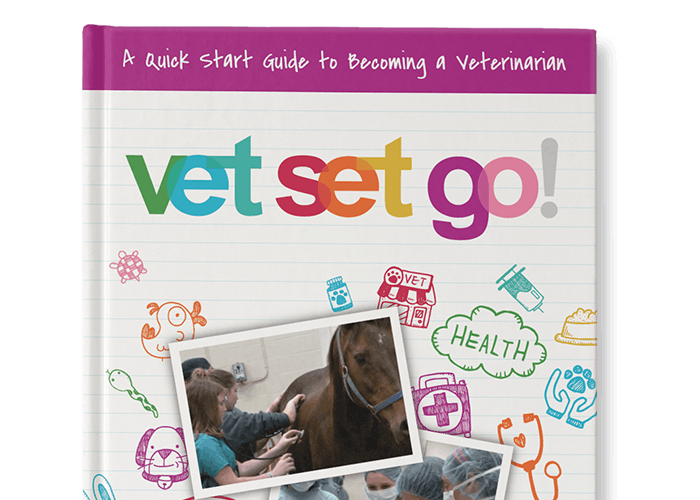What are My Responsibilities When Fostering a Pet?
Are you a future veterinarian who wants to volunteer at an animal shelter but you don’t know how to get started?
Well, the best way to start volunteering at an animal shelter is by learning how to foster a dog or a cat. In this blog, Vet Set Go will teach you everything you need to know about fostering so you can start fostering at a shelter near you.
What is Fostering?
Medical coordinator and shelter foster office director Angela Juarez explains, “We seek foster care for animals that aren’t ready to go up for adoption. Sometimes they’re not old enough. They come in when they are newborns. They are there with their mom. Other times, they aren’t healthy enough. They need to be treated for colds or skin infections. We find families that are willing to take them into their home and care for them until they are ready to find their forever home.”
Dr. Jennifer Broadhurst, shelter veterinarian and medical director, explains what you and your family will do as foster parents. “When families take home foster pets, they are responsible for all their daily care — feeding, grooming if they need it and if they are underage, sometimes bottle feeding and them and medication if they need it.”

Three Examples of Pet Fostering:
- Raising a tiny kitten that no longer has its mother. Care may include bottle-feeding milk until the kitten is ready for solid food.
- Keeping an abandoned dog that was never socialized. The care will include walking, petting and teaching the dog to sit and stay.
- Caring for a sick cat. The cat may need special medicine, so the volunteer may need to give the cat pills until it is healthy.
The Benefits of Fostering

Fostering a pet is one of the best ways for volunteers to get the animal care experience they need in order to become a veterinarian:
Fostering pets from your local shelter can help you get experience with animals and, in particular, learn about caring for kittens and puppies.
Fostering will teach you the basics of understanding animal health and how to care for a young or sick pet.
Volunteers care for shelter animals that aren’t quite ready to be adopted.
Fostering often opens the door for more future volunteering opportunities at animal shelters.
As Dr. Broadhurst adds, fostering pets “is a unique experience for kids and teens interested in being veterinarians to learn about [the] care of animals- basic care, care for underage animals and the basic medications they need.
Additionally, fostering leads the way for other volunteering opportunities. Foster families get to know the staff and veterinarians at the shelter and are often considered first when volunteer opportunities come up.
Learn What It’s Like
How to Foster a Dog or Cat
Step 1: Talk with Your Family. If you want to foster a shelter pet, the first thing to do is talk it over with your family. Fostering is a family affair that will require everyone’s participation. Young foster kittens and puppies often need to be bottle-fed every 2 hours, and someone will need to drive the pet to the shelter when it is due for shots and/or a check-up with the shelter vet.
Step 2: Decide on a Pet That You’d Like to Foster. Decide as a family what animals and ages you will consider sheltering. One of the factors in this decision is the type of home you live in and the outdoor environment you have access to. Families with big yards could consider fostering dogs. Families who have a separate room available that they can “kitten proof” could consider fostering kittens.
Step 3: Research Local Volunteer Shelters that Offer Fostering Programs. Research the shelters in your local area, and find out which ones have a foster program. Remember to sign up for the Vet Volunteer App. It lists locations across the country where future vets like you have volunteered. There might be a shelter close to your home.
Step 4: Meet with the Shelter’s Foster Coordinator. As a family, meet with the shelter’s foster coordinator to determine what is required of foster families. See the checklist for questions to ask.
Step 5: Perform Required Training. If this shelter seems like the right place, you will need to complete the necessary paperwork and go through a training program on animal care.
Step 6: Prepare for Being a New Foster Pet Parent! Get going! Gather the necessary supplies. What you need will depend on the pet, but items to consider include towels, blankets, food and water bowls, toys, a cat tree, a leash, training pads for housetraining and a litter box. If you already have a pet, you may have some of these supplies, but keep in mind that you might need to get extras, depending on what type of animal you’re fostering. (For instance, each adult cat will need its own litter box.) Ask shelter employees for advice on what they recommend.
Checklist for Fostering a Pet
It’s important before fostering to have the following questions answered by the shelter you’re looking to foster with:
- How long does fostering a pet typically last?
- What happens if we can no longer care for the animal?
- Will the shelter provide all the necessary supplies for food, medications, etc.?
- What should we do if there’s a medical emergency?
- Can we adopt the pet if we choose?
This list is by no means exhaustive, but these questions will help develop your relationship with the shelter and the ultimate well-being of the fostered animals. Fostering is an important endeavor, and the animals being fostered really do need the best care they can receive.

Supplies You Need
Fostered animals often have more needs than normal pets and might need more than you think, such as toys, beds and sometimes even special feeding bowls.
Here are some basic supply lists when fostering dogs and cats:
Supplies for Fostering a Dog
- Towels
- Blankets
- Food and water bowls
- Toys
- Leash
- Training pads for house training
Supplies for Fostering a Cat:
- Towels
- Blankets
- Food and water bowls
- Toys
- Cat tree
- Litter box
Tracking Your Volunteer Hours
You’re fostering your first pet. Congratulations! Remember, you need to start keeping a record of your volunteer hours. When you apply to a veterinary college, they will expect you to share your total number of volunteer hours and explain what you did during the days you were working. For this reason, aspiring veterinarians need to be tracking their volunteer hours every time they volunteer. Learn more here.







Comments Add Comment
Want to add a comment?
In order to comment you need to login or join Vet Set Go